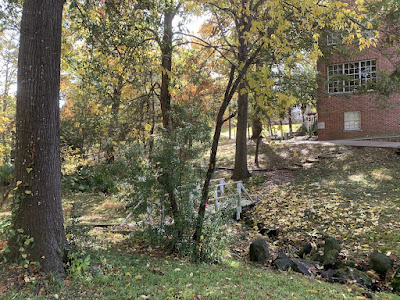Although many species of trees are capable of outliving humans, they still have limited lifespans, and just like us, they can be victims of physical damage and disease that result in 'untimely deaths'. Due to the large variety of species and conditions in the arboretum, we frequently see injured trees or sick trees and then must decide what to do with them. This week we took action on three cases.
 |
This wax myrtle (Myrica cerifera) shrub has two main trunks that are beyond help.
|
 |
Thoroughly rotted and moldy wood is immediately visible.
|
 |
Upon being cut with a chainsaw and falling to the ground, the fallen trunk exploded in a blast of rotting pulp.
|
 |
| At the end, everything is much cleaner and the wax myrtle specimen itself is unharmed. |
|
|
|
|
 |
Among the palmettos, we see the trunk of a red bay (Persea borbonia) marked with pink tape. The red bay has certainly seen better days. It appears to be afflicted with some disease.
|
 |
The leaves look dreadful, with crinkled edges and spots.
|
 |
Both trunks, the dead one and the living one, have equally scarred and damaged bark. It's time for this one to go, in order to avoid spreading disease.
|
 |
What's wrong with this tree was wrong all the way through it. Sometimes you don't know the condition of a tree until you saw it down. In this case, we're vindicated.
|
 |
This titi tree (Cyrilla racemiflora) has two trunks. The right trunk has branches with leaves, but the left trunk, marked with pink tape, does not have leaves or leaf buds.
|
 |
Due to its proximity to the footbridge, this individual has endured much pruning over the years.
|
 |
Luckily, several swamp titi shrubs, of varying age and size, still remain in this area, and with the dead material removed, pedestrians have more room on the boardwalk.
|










